Audi A4 has matured into sport-luxury sedan
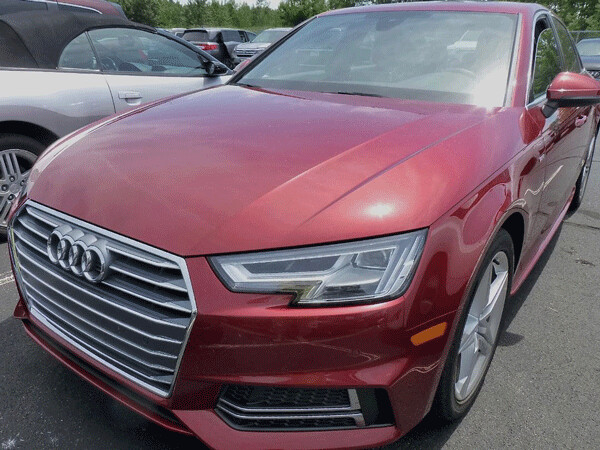
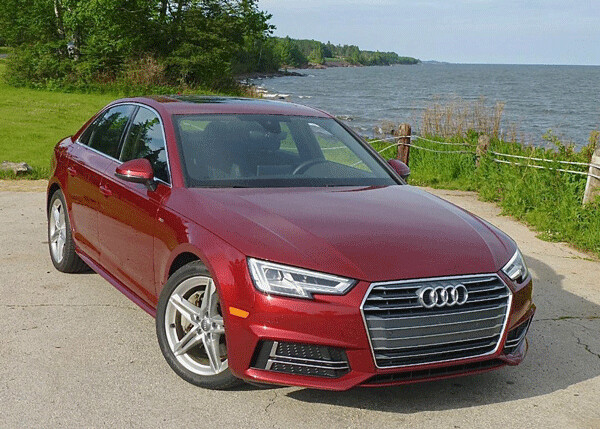
The first Audi A4 was built late in 1994 and introduced to the U.S. as a 1995 model. That was 23 years ago, and the car remains near and dear to my heart because that also was the year I was invited to join the North American Car of the Year jury.
The reason those two unrelated happenings cross over in my memory is because as a rookie on the jury, I voted for the Audi A4 because it not only met all the criteria but exceeded every point for being new, for having high technology, for being a superb car to drive, and for having unique styling.
Audi had built great cars in Ingolstadt, Germany, for many years before that, but the A4 was a breakthrough as a moderately priced and moderately sized sedan, combining the luxury of the larger Audi autobahn cruisers and the fuel-efficiency that seemed to be rising in the scope of buyers world wide. Audi started out, of course, racing cars as Auto Union, and brought several companies together to compete with Mercedes and, later, BMW.
For a number of years, and through four generations of A4 models, that car was one of the best bargains in the automotive world, available starting in the mid-$20,000 range, then creeping over $30,000. But it was always a well-balanced, safe car, and it had the world-reknown quattro system of all-wheel drive that Audi had devised. The front-wheel-drive A4 had its price of around $29,000, but the quattro model was only a $1,500 hit on the sticker. What wise consumers learned early is that you not only gained all-wheel drive in the deal, but when you went to trade it in five years later, it was worth about $3,000 more with quattro than without it, making it a smart investment.
The quattro concept was based in performance, because going around a tight curve and switchback on a race course meant the outside two wheels would always have to turn farther than the inside, so Audi’s quattro - lower-case letters, please - provided that. The quattro system just happened to afford great safety and control on highways and streets in all weather conditions, but that was as a by-product of its performance objective.
A lot of years have passed since 1995, and the number of fantastic cars has proliferated beyond the scope of what any of us foresaw back then. But it all came back to me recently when I had a chance to spend a week with a 2018 Audi A4 quattro, with a manual 6-speed transmission.
The car is now in its fifth generation, and it came in a dark red, called Matador Red metallic, and its understated luxury struck quite a pose, wherever you parked it or drove it or watched it drive by. Driving the car is a real treat, which is certainly common to all Audis. The A4 has grown, or maybe matured, because it’s no long the company’s efficiently stubby entry-level sedan. The very neat A3 fills that role now, and the A4 has aged gracefully to retain its sporty demeanor but now fits in as an “entry-luxury” car, as a smaller version of the elongated A5, A6, A7 and A8 models.
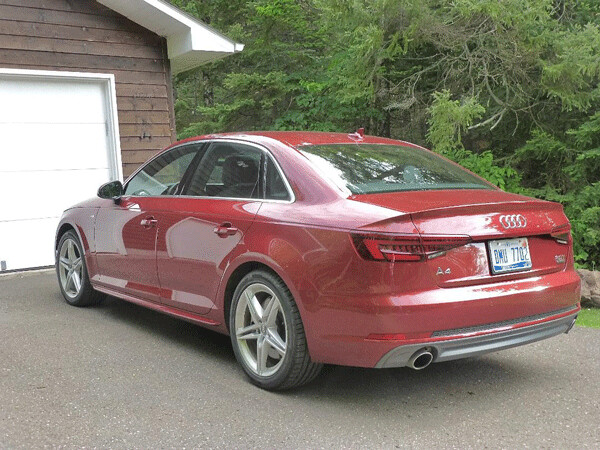
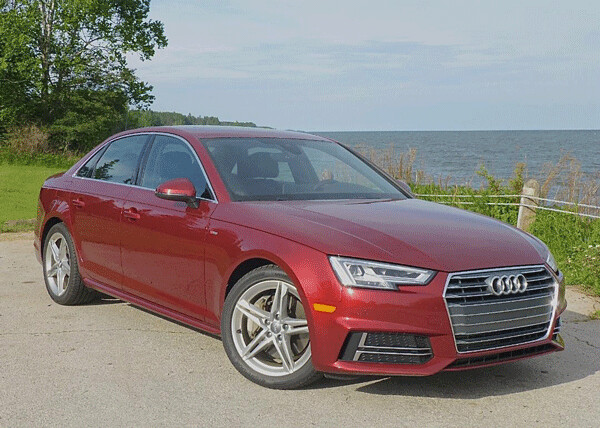
Climbing aboard, you are taken with the feel off security and luxury, from the leather seats and soft-touch dashboard and finely attached seams everywhere. The initial feeling of sporty luxury comes from the supportive bucket seats, and all of that is long before you’ve even started playing with the instrumentation, which I find the most impressive of any manufacturer in the world. More on that later.
The sticker delivered a bit of shock to my system. The A4 quattro listed for $40,500, which wasn’t bad, but as tested the car stood at $51,650. Even that isn’t bad, when you start to examine the high-tech stuff that is all compiled as options.
You begin with the tried and true 2.0-liter 4-cylinder engine, turbocharged to deliver 252 horsepower and 273 foot-pounds of torque. The 6-speed stick is a treat, especially with the quattro system’s ability to cling to the roadway when you drive aggressively around curves. It also comes with start-stop to save you some gas at stoplights.
Leather seats and a power panoramic sunroof, and all the safety stuff, such as multiple airbags, Audi’s antilock brakes and the accompanying elecronic brake force assist and ability to prevent low-speed collisions in city driving. Full stabilization control also joins all those assets as standard equipment.
The Premium Plus package adds 18-inch styled wheels, a Bang & Olufsen sound system with 3D sound, a built-in alarm with motion detector, LED headlights (to go with the standard LED taillights), and the Navigation and Telematics package with Audi’s unique navigation system for the virtual cockpit, boost the price by over $6,000. And the Sport Plus package is worht another $3,400, with dynamic steering, sport seats and sport adaptive suspension, and the S-Line interior trim to set your car apart from other a4s.
While the driving is what leaves the best impression, there are some surprises there, too. The engine coordination between the impressive power, the transmission, and the direct fuel injection feeds the computer and allows tremendous flexibility in performance. You can take off as hard as you want, but once you’re moving, you can either shift a lot or a little.
If you approach an intersection in, say, fourth gear, you slow down, see there’s nothing coming, and can either downshift and get more revs, or simply step on the gas and let the computer pull out a bit more torque for an easy rise from crawl speed.
Also, more than once I got onto the freeway and cruised along, shifting up to fourth, and then, hearing no complaints from the engine, forgetting to go up to fifth or sixth because it cruised so easily at 70 in fourth. Even with a few of those brainfades, we got over 30 miles per gallon, and a couple times reached the EPA highway estimate of 33.
If you chose the front-wheel-drive A4, you could get more gas mileage, with EPA highway estimates of 37, but I would be in many cases the mileage would be almost identical. And if you’ve ever driven up the hills of Duluth, Minnesota, and realize what winter storms can be like, you wouldn’t trade the all-wheel drive quattro for a couple mpg.
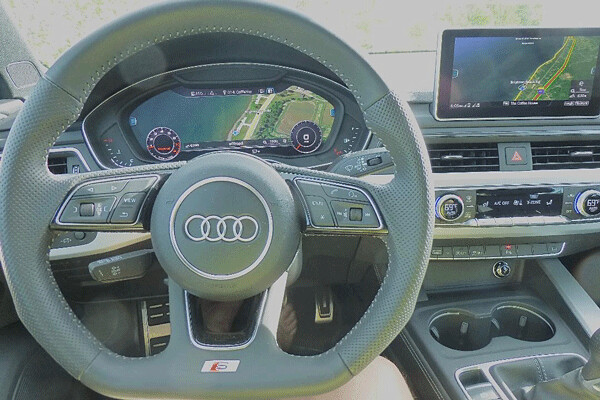
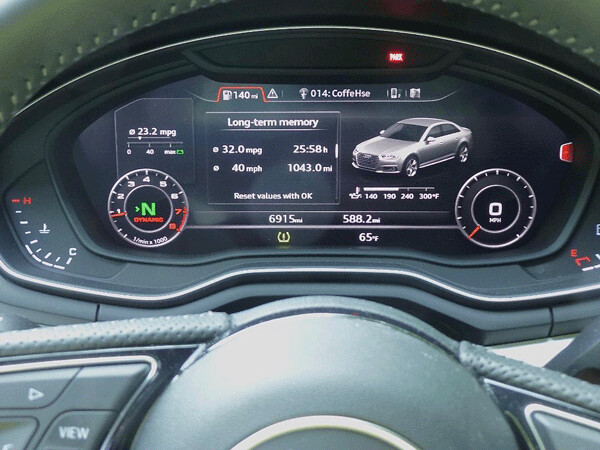
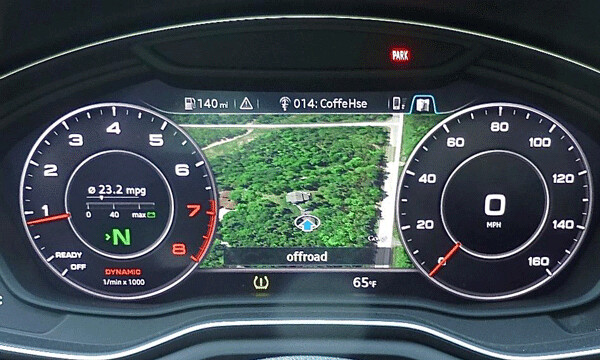
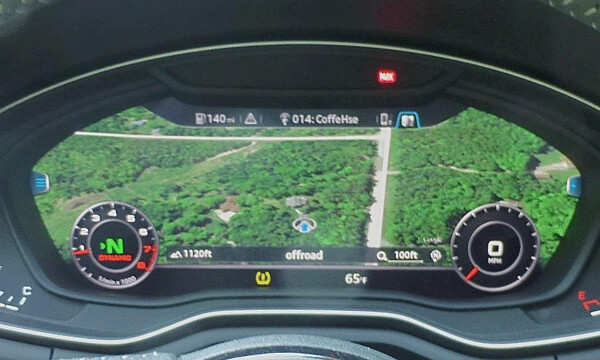
My favorite feature might be the nav screens. The normal center stack screen does a great job, and can have its information altered easily by a console knob. Playing around with it, I found that you can have a flat map of streets and so forth, or you can switch it and come up with a Google Maps screen, which is from actual satellite photos, tree detail and all. Impressive. And very neat.
Meanwhile, the steering wheel is loaded with technology itself, and one of the features is that you look at the instrument panel and see the normal large tachometer on one side and large speedometer on the other, with a panel between them for various items you select. One of those items is to duplicate the nav screen.
Sure enough, you get the nav map between the tach and speedometer. But if you click it again, it goes to the Google Map real-life video. And if you click it still more, the large tach and speedometer shrink to about one-fourth their size, out on the extremities of the whole instrument panel, and the Google Map screen spans from left to right.
It is amazing, and I parked in my driveway and played with it for several minutes. I got it to click onto a location where I was parked, and then I zoomed in - until it showed me an actual shot of my driveway, turn-around area, house and garage. Then I magnified it, with the same switch, and felt like I was parachuting down into my property.
Come to think of it, you can have your autonomious self-driving vehicle; I’ll take the A4, which I do believe you could tape over the windshield and drive from here to Chicago by using only the nav screen between the instruments.
By the way, if you went back to 1994, I was right when I voted for the Audi A4 as Car of the Year. Nobody can remember what actually won, but the A4 still is among the best cars in the world.
